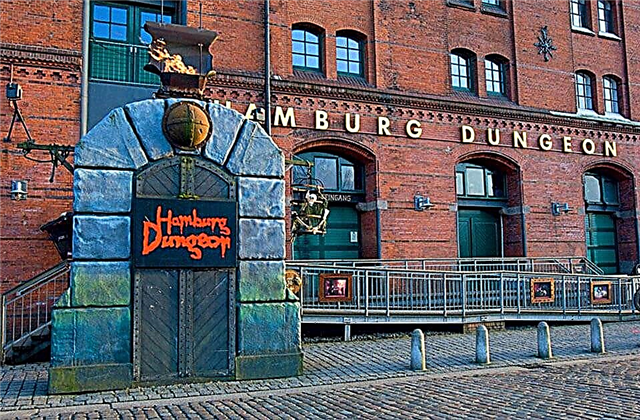Greece. With this word, any person has an unambiguous association - antiquity. Of course, to this day, many of the ancient architectural monuments of Athens have been preserved in ruins and dilapidated by time, but they are the first to attract visitors. By the number of ancient sights, the city can be safely called a monument. Most of them are located in the old part of the city. The Athens route for one day will require you to tune in to an active walk from early morning until dark. For an express review, you will need: a little theoretical training, physical stamina and a budget of about 200 €. Going out onto the streets of Athens, be prepared to face a huge number of tourists (according to statistics, about 100 people climb the Acropolis every 10 minutes). But this should not be scary: the capital of Greece is a tourist-oriented city, understandable, and it is almost impossible to get lost here.
How to get from the airport to the center
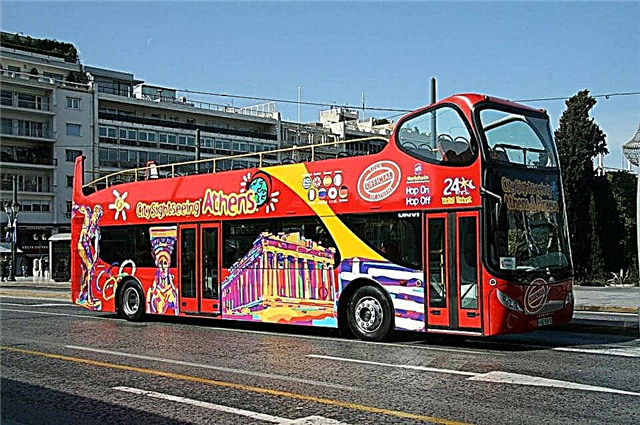
From the international airport of Eleftherios Venizelos, the center of Athens can be reached by 4 modes of transport. Comfortable buses (X93, X95-X97) departing at intervals of 30-60 minutes will take you in 1 hour 10 minutes - 1 hour 50 minutes. But you need to keep in mind that there is no room for bulky luggage. A ticket worth 6 € can be purchased at the terminal machines, at the newsstand or from the driver. If you choose the metro, you need to get out of the terminal building, cross the road following the signs “To Trains” and get off at the entrance to the Blue Line of the subway. Take it to pl. Monastiraki in 1 hour 10 minutes.
Trains run from 6.30 am to 11.30 pm in 5-10 minutes. The ticket price is 10 € one way, 18 € round trip. Group ticket - 2 people - 18 €, 3 persons - 24 €. It is a convenient transport for single tourists without children and large luggage. An overground train goes to the Central Railway Station every 15-30 minutes and arrives at the final destination in 40 minutes. Runs from 5.30 am to 9 pm. The ticket costs 10 €. If you are with children and substantial luggage, it is best to choose a transfer - an economy class car (42 €), a minibus (7 passengers) - 84 €. The duration of the trip is 35 minutes. The transfer can be booked online.
Acropolis

The main object of attention of all visitors to Athens is the Acropolis. It is more convenient to start the route by visiting the main attraction of antiquity for several reasons. Firstly, there are fewer people in the morning (the entrance opens at 8 am). Secondly, it is not yet so hot in the open sun. And thirdly, here you can purchase an admission ticket that allows you to subsequently receive free admission to the Temple of Zeus, Kerameikos, Roman Forum, National Archaeological Museum, Agora and Hadrian's Library.
By the way, for those who have the opportunity to stay for several days, the validity period of a single ticket is determined for 4 days. In ancient times, each Greek city had its own Acropolis (Greek "acropolis" - "the top of the city"), but none of them in its scale and number of buildings of the era of antiquity can equal the Athenian. An interesting fact is that the construction of high-rise buildings is even prohibited in Athens, so as not to block the views of the Acropolis from any of the streets of the capital.
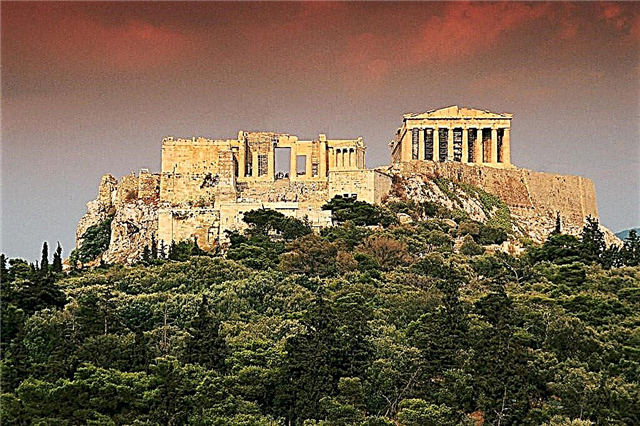
The visiting card of antiquity, the Acropolis includes several impressive monuments, among which the dominant place is definitely occupied by the Parthenon, a temple dedicated to the goddess Athena and erected long before our era. In those distant times, sailors could see the radiance from a giant statue of a goddess in a helmet, standing next to the Parthenon, from a distance of 40 km. Today, only legends remain of the huge statue of Athena. Kidnapped during the Fourth Crusade, she died from a fire already in Constantinople.
Unfortunately, history has not spared the Parthenon. During the conquest by the Turks, the temple was used as a mosque, and later was practically destroyed by the Venetians. For many years, the temple of Athena has been clothed in scaffolding, but this does not prevent tourists from appreciating the grandeur of the former structure. Visiting the Acropolis of Athens, every tourist certainly expands his knowledge and replenishes his collection of impressions from the preserved monuments of antiquity: the marble Propylaea at the entrance, the Temple of Nike, the Erechtheion and the Theater of Dionysus on the southern slope.
Old Acropolis Museum

Founded in the 19th century. The Old Acropolis Museum is a repository of priceless rarities that illustrate ancient times. It is located at the edge of a cliff at an archaeological site. In 9 galleries, you will see artistic masterpieces created by ancient masters to decorate the Acropolis. Entering here, you find yourself in the world of prehistoric statues, bas-reliefs and various interior items. The real treasures of the museum - Archaic crust (graceful sculptures of girls) cannot fail to arouse admiration.Each of them has its own unique appearance, individual sophistication, captured by talented sculptors of the 6th century. BC e.
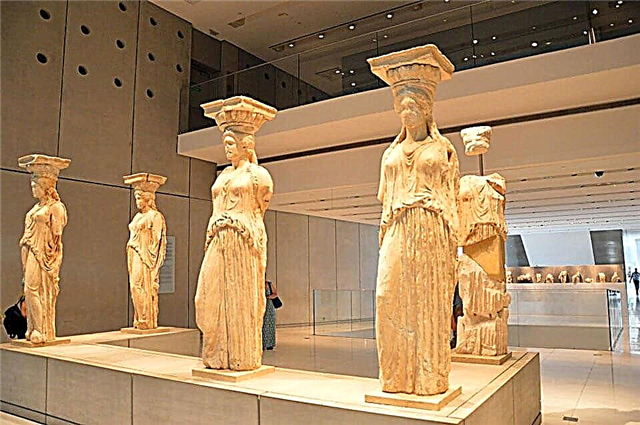
The imagination is captivated by no less interesting exhibits - Caryatids - majestic statues of young priestesses. The level of artistic skill of the sculptors is striking in them. How precisely the graceful curves of female figures, the flowing folds of their clothes are accurately reproduced in stone! Named after the models from Carey, the statues served as supports for the ceiling of the portal in the Temple of the Erechtheion. Interior items from the Parthenon will arouse your interest: frieze plates, a statue of Moshofor. The Old Acropolis Museum carefully preserves the artistic and historical heritage of Hellas. Entrance ticket price - 5 € (adult), 3 € (student), children - b / p.
Erechtheion
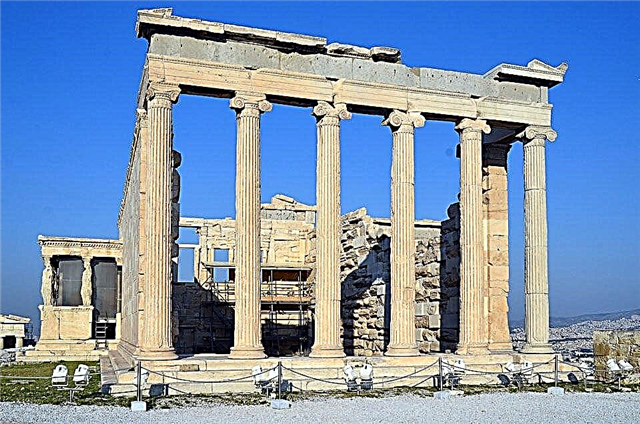
Among the ancient architectural objects of the Acropolis, the ruins of the Erechtheion are in second place in terms of grandeur and significance. Built in the 5th century. e. in honor of the goddess Athena, Poseidon and king Erechtheus, the sanctuary was intended for carrying out rituals of sacrifices in it. A lace of legends envelops the name and location of the grandiose structure. According to one of them, here Poseidon broke through the rock with his trident, and a source was hammered out of it. According to another version, Athena opened an olive tree in this place to the Athenians. The third myth says about the legendary king Erechtheus buried here.
In the temple there were a wooden sculpture of Athena that had allegedly fallen from heaven, a lamp made of gold by Callimachus, a statue of Erechtheus, an altar of Hephaestus. Now, none of the above items of luxurious decoration have survived here. But on the building of the sanctuary, you can see the original architectural elements: Ionic columns, stone carved rosettes on the doorways of the portals. 6 female figures in marble - caryatids are talented copies of the originals. The originals of the sculptures are kept in the Acropolis Museum and the British Museum.
Odeon of Herodes Atticus
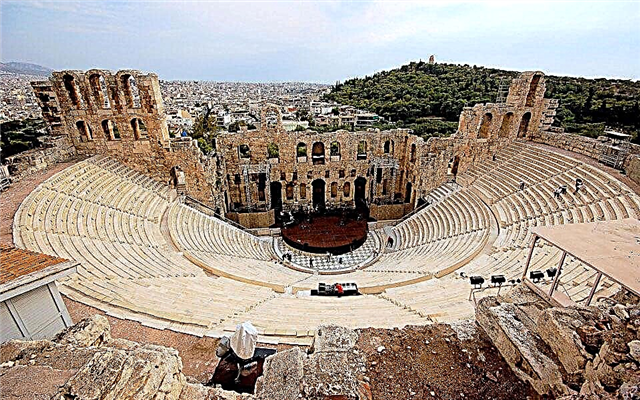
Participants of the Athens Festival are familiar with the Odeon, the oldest ancient theater preserved at the walls of the Acropolis. Built in the Roman style by the wealthy Athenian Herod Atticus in honor of his late wife, the odeon was the 3rd theater in the city, with a capacity of 5 thousand people. Its architectural form has become a model for the construction of similar structures in other capitals. The roof of the Odeon (50 m wide) was destroyed by the Heruls (Germanic tribes) in 267 and has not been rebuilt.
You can experience yourself as spectators of the Odeon, sitting on the marble seats left over from the 32 rows that girdle the hillside. Once here, in addition to them, there was a theater backstage building, the walls of which were faced with marble and decorated with luxurious statues. You will see many niches where they were located. In the 50s of the last century, the restoration of spectator seats took place, and today many performances, concerts are held in the Odeon, an annual Festival is held.Famous opera and pop singers of the world have performed and perform on the stage of the ancient theater.
Theater of Dionysus
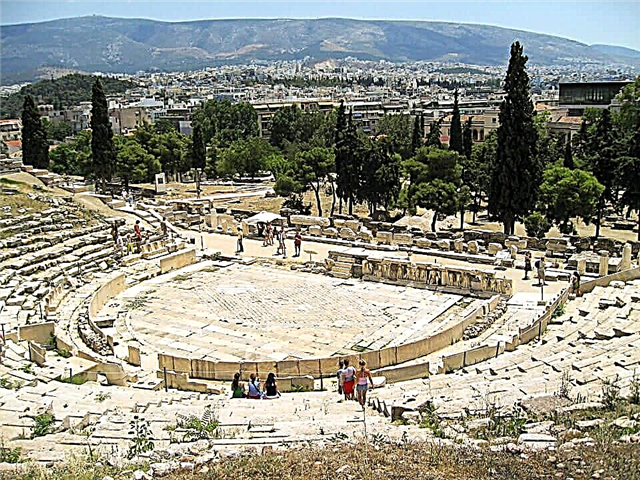
Remains of the audience rows, a semicircle of the stage on the southern slope of the Acropolis hill - the majestic traces of the world's oldest theater - the Theater of Dionysus. The Greeks, who worshiped the God of wine and joy, erected a wooden structure in honor of him in the 5th century. BC. All festive events were held here, there were performances based on the plays of Euripides, Sophocles, Aristophanes and Aeschylus. Over the centuries, the tree in the arrangement was replaced with marble, increasing the size of the performance area (orchestra) and decorating it with sculptures of satyrs. In the era of the Romans, gladiator fights were held here, circus artists conquered with their skill.
Directly in front of the stage were the marble chairs of the honorary Athenians with their names engraved on them. The 2nd row was occupied by the imperial box. Today, looking at the marble slabs with the grass of oblivion breaking through them, one is mentally transported into an amazing era of creation, the prosperity of art and incredible labor. Schoolchildren, students, townspeople and thousands of tourists come here to feel the great history. It is best to enjoy the spectacle of the noble ruins in the morning or early evening, when there is no heat.
Ilias Lalaounis Jewelry Museum
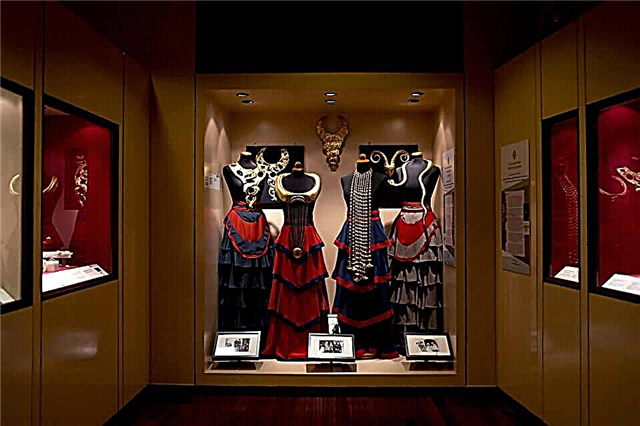
The beautiful old building houses not just the Jewelry Museum, but the world center of jewelry art. The uniqueness of the collections contained in it, the beauty and the vast geography of the products, the extraordinary popularity all over the world allow it to be called that way. Students from different countries come here to study fine art at the International Center for Jewelry Education. The basis of the permanent exhibitions are the masterpieces of Lalaounis himself, a renowned master who has been making jewelry since the 40s of the 20th century.
Each of them is not just a luxurious piece of jewelry, but a piece of high art. The exhibits of the museum (more than 4 thousand) can trace the history of the development of jewelry craftsmanship in the world (60 countries) from the Neolithic and Paleolithic eras to the present. Your undoubted interest will be aroused by copies of jewelry from the Trojan "Priam's Treasures" found by Schliemann. A separate exposition reflects the history of Greek jewelry from the "Bronze Age" to the Byzantine times.
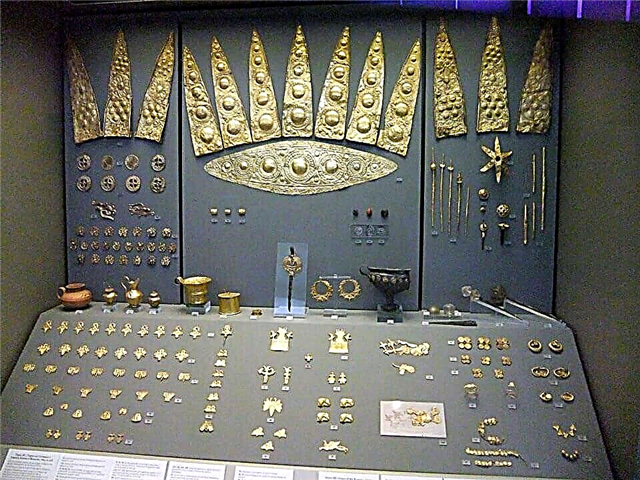
Gold products from other European, Asian countries and America are shown at thematic exhibitions. On the 2nd floor of the museum, you will see collections of contemporary jewelers. They embody the motives of natural ecology, reflect modern technological trends. The Ilias Lalaounis Museum is a kind of university of jewelry art, the embodiment of incredible beauty in precious metals and stones. A visit to the "temple of jewelry" will leave a deep impression. Entrance price - 5 €.
New Acropolis Museum
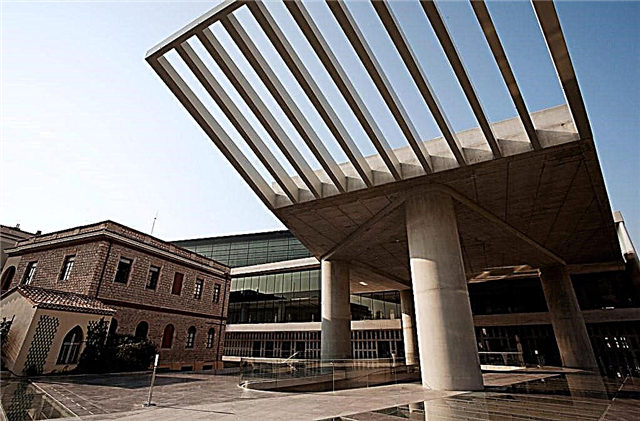
To visit the museum, you need to prepare 5 €, as it is not included in the price of a single ticket. Trust me, you won't regret it. According to the Sunday Times rating, the New Acropolis Museum is ranked among the best, unique exhibition halls in the world. The construction of the complex was conceived directly above the archaeological excavations, and now the results of the works of archaeologists can be viewed through the glass cover instead of the floor on the first floor of the building. The museum is located on the south side of the Acropolis, just 250 meters from the Parthenon. Glass stained-glass windows of the gallery and a special observation deck on the roof of the museum allow visitors to once again admire the panorama of the "antique" peak of the city.
Temple of Olympian Zeus
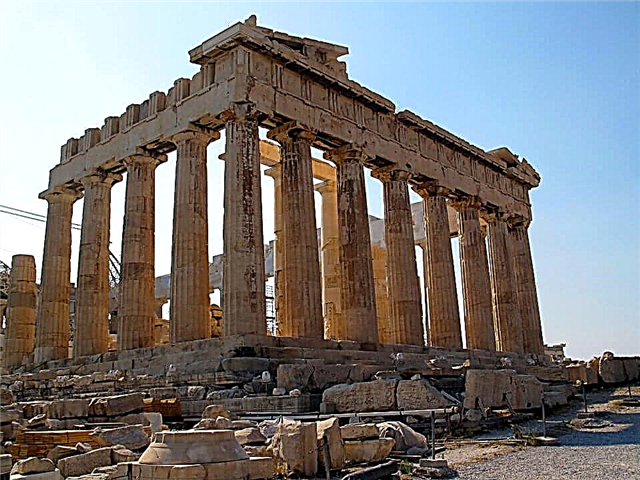
17 Corinthian dilapidated columns and a rectangular platform in front of you are all that remains of the greatest ancient structure of the Temple of Zeus. The sanctuary of the main Olympic god was built for 7 centuries (from the 6th century to the 2nd century AD), but in its finished form it did not last long. In the 300s A.D. it was thoroughly destroyed by barbarians, and building materials began to be used for other objects. According to the plan of the sons of the Athenian tyrant ruler Pisistratus, the grandeur and grandeur of the building was supposed to overshadow the temple of Artemis in Ephesus.
The change of the regime, the death of the emperors slowed down the construction, and in 132 the temple was inaugurated, which became the most significant religious building of that era. The imagination of eyewitnesses was shocked by a huge golden statue of Zeus, trimmed with ivory and placed in the center. Equally impressive were the outdoor sculptures of emperors and Greek gods. During the excavations, 14 adjacent columns were discovered, 2 separate from them and 1 fallen column. But even these remnants can be judged on the former greatness of the Temple of Zeus. It is no coincidence that the flow of tourists here does not run out.
Arch of Hadrian
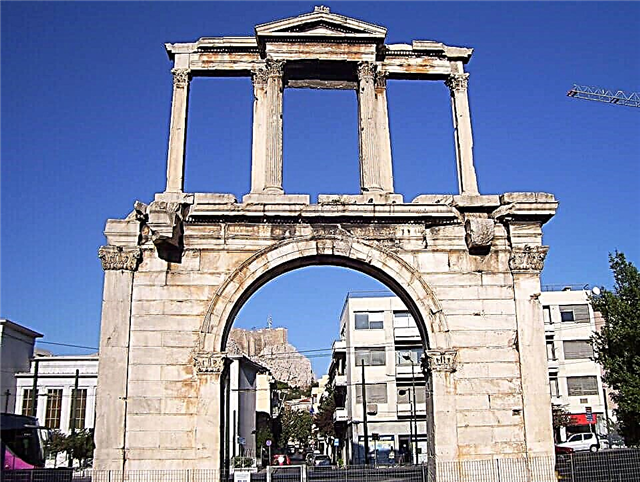
It is impossible not to notice the monumental arch 20 meters from the Temple of Zeus. Outwardly, it resembles the Arc de Triomphe of Rome and is called the Arch of Hadrian. This structure, unique in its strength and durability, was erected as a gateway connecting the center of Athens with the new district of the city. Up to the 20th century. The building, made of blocks of Pentelian marble, has not undergone reconstruction, but it has perfectly preserved the main structures. The dimensions of the Arch are surprising: height - 18 m, length - 13.5 m, width - 2.5 m. Scientists-architects recreated the original appearance of the building and found out which parts were lost. Today, 4 pilasters with capitals, 2 Corinthian columns and a triangular roof pediment have survived on the top floor.
On the lower tier, well-preserved walls showcase the high quality of antique construction. By the ornament of the capitals of the arched arc, one can judge the skill of the sculptors working on the design. It is not hard to guess how magnificent the sculptures decorating the upper tier windows and other architectural elements of Hadrian's Arch were. The inscriptions on the ceiling on both sides read: "This is the city of Hadrian, not Theseus." Although there is another, more neutral version of the decoding of the dictum. Inspection of the arch b / p.
National Garden and Zappeyon
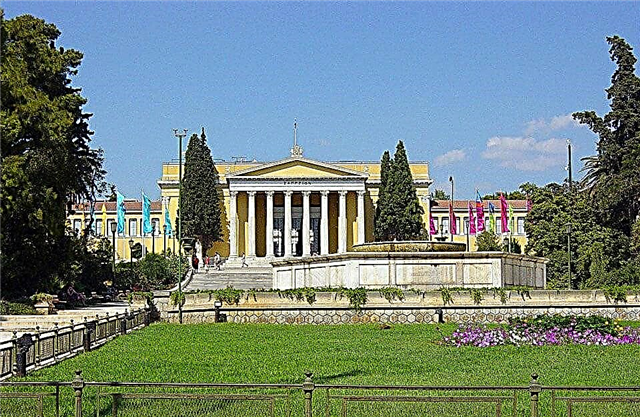
After exploring the architectural artifacts, you can relax in the shady alleys of the National Garden, located behind the Parliament building. This is a former royal park, laid out under Queen Amalia on 15.5 hectares. Here you will see many artificial mini-ponds with colorful fish and turtles, aviaries with animals, peacocks walking around the territory. Exotic trees and shrubs, palms, an abundance of flowers, chirping birds make a walk through this oasis delightful. The surviving elements of ancient buildings, marble busts of prominent personalities of Greece, the Sundial, the remains of Hadrian's viaduct create the impression of a green open-air museum.
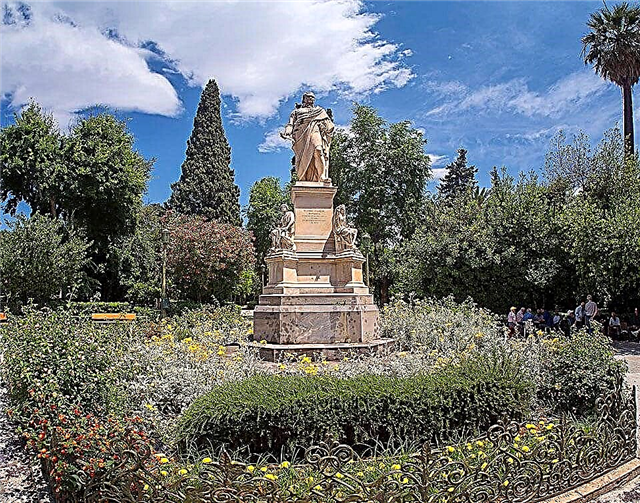
The main architectural object of the National Garden is the Zappeyon Palace (1874-1888), which delights with its classical appearance. The majestic building is named after the famous Greek philanthropist Zappas, who revived Olympic sports traditions. It was here that the Olympic Village of the first modern Olympics (April 6, 1896) was located. Now it hosts international exhibitions, political forums, congresses and conferences.
Syntagma Square

If you tell someone that you have visited Athens, but have not been to Syntagma Square, they will not believe you. Here, in the central square, the parliament building is located. Initially, it was conceived as a royal palace, and for some time King Otto of Bavaria lived in it. But after the coup in 1843 and the signing of a new constitution, he was ousted by the revolutionaries. In honor of this event, the place was named Syntagma (Constitution Square). The building was at first a symbol of the monarchy, and then - a symbol of democracy.
The most curious sight that can be observed every hour is the changing of the guard of honor. Soldiers of the National Guard of the Evzones (Greek "evzon" - "well belted") are on guard at the tomb of the Unknown Soldier in front of the parliament.They are very unusual and figuratively minting every step, and the clatter of boots lined with steel nails is heard by everyone watching the ceremony. The form of the guard of honor is modeled on the basis of the national Greek costume with integral components: a man's skirt (fustanella), a red beret with a long tassel (phareon) and leather boots with large pompoms (princes). The Changing of the Guard of the National Guard is one of the most lively sights of Athens.
Plaka area and Anafiotika village
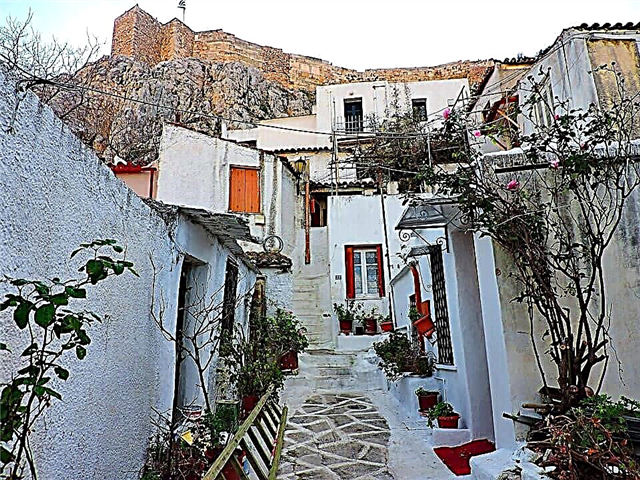
Your impressions of Athens will not be complete if you do not visit the historical core of the city - the old Plaka district. It is located off the northeastern slopes of the Acropolis. Unofficially, Plaka was awarded the romantic name "District of the Gods", referring to the proximity of the ancient sights of the Acropolis. Labyrinths of narrow streets with rows of picturesque houses and authentic buildings captivate everyone with an amazing atmosphere of antiquity. A walk along the largest street, Adrianou, will be a pleasure. There is something to see here for tourists. Of undoubted interest are the preserved Byzantine churches (13-14 centuries): the Transfiguration of the Lord, St. Catherine.
It is worth visiting one of the local museums, such as the Museum of Greek Folk Art or Musical Instruments. After visiting one of the many taverns, you can enjoy a delicious lunch in the national spirit. And in the kafenion, drink a cup of excellent coffee to cheer up before walking along Anafiotika - a small settlement of the district. It was founded in 1841 by carpenters and masons who built modern Athens. For themselves, they built houses, chaotically scattered along the streets. Now only 45 buildings have survived, which have become architectural landmarks of Anafiotika.
Roman Agora
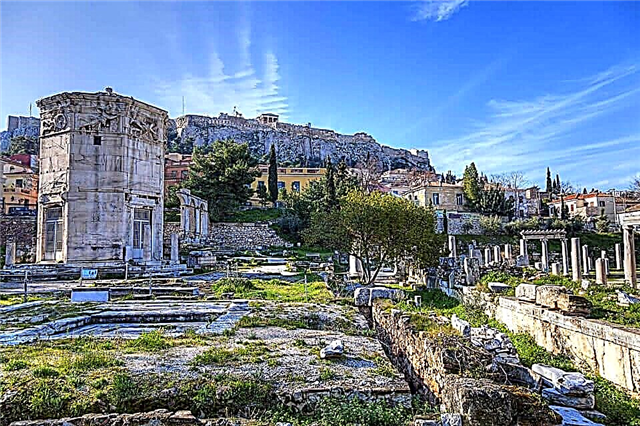
You can see traces of the mighty Roman Empire by visiting the Roman Agora. The trading platform (market), equipped under Octavian Augustus (11 BC), was discovered by archaeologists during excavations in the 20th century. It was not only a bustling place of trade, but also the center of the city's political life. Surrounded on all sides by columns in the Ionic style, the square in the form of a rectangle contained shops, warehouses, shopping arcades. On the west side was the central entrance called the Gate of Athena Archegetis. The entrance from the eastern side was called the Eastern Propylaea.
Next to them was the Agoranomeyon - an administrative building and Vespasillon (shared toilet). Here you will be able to contemplate the surviving fragments of the colonnade, the Gate of Athena, the remains of the Eastern Propylaea. In the southern part of the Agora, you will see the ruins of a Roman fountain. The symbol of architectural strength and perfection - A. Kirsky's Clock Tower (or the Tower of the Winds) has been perfectly preserved. The northern side of the agora is crowned with the Fenchie Mosque, built in the 17th century. on the site of a destroyed Christian church.
Areopagus
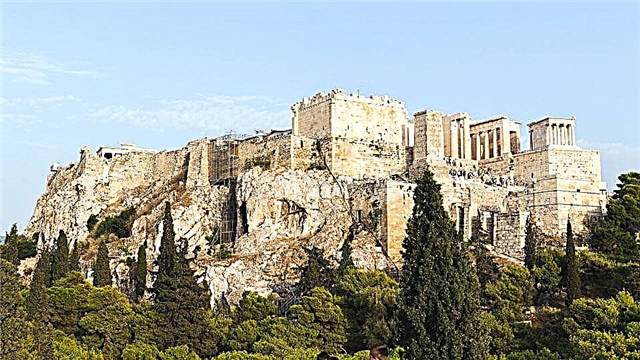
If you cross the road from the Agora, you will find yourself on the Ares Hill or Areopagus - the legendary place of ancient Hellas. Although now almost nothing here reminds of the era of antiquity, but even just walking along the marble hill where Socrates was executed is definitely worth it. Here the council of elders (archons) met - the Areopagus, the highest court of Athens. As the legend says, it was on this hill that the god of war Ares was tried, justified by the advice of the Gods. Aristotle referred to the Areopagus as "a sacred place in the open air." Over the centuries-old history, the Areopagus, as a judicial body that has undergone many reforms, remained the main legal force of Athens.

Today the legendary hill is surrounded by a high lattice fence with several gates. Steps carved in stone lead up from its foot. At the top you will find a clearly visible small area surrounded by the remains of stone benches. The contours of the perimeter of the house with a well recess in the corner and a drain are clearly visible. The northern slope of the hill, where the Mycenaean cemetery was located, is overgrown with trees. From the top of the Areopagus, a picturesque panorama of Athens opens up, which you cannot help but admire.
Athenian Agora

You can complement your impressions of the ancient city by visiting another agora - Athens, located on the neighboring gentle slope of the hill. Now it is an open-air museum, spread over 5 hectares. The huge trading square was not only a place of trade, but also the center of the social, political and economic life of Athens. This is evidenced by the ruins of numerous objects discovered during excavations of the 19th and 20th centuries. The main administrative and public buildings of the city were located here. By value, the Athenian Agora was the second Acropolis.
Your imagination will be amazed by architectural structures, partially preserved or lying in ruins. The mere sight of the famous Temple of Hephaestus, built in the Doric style, is worth a lot. No less impressive are the two-storey portico of the Stoa of Attalus and the first Athenian church of the holy apostles of Solaki. From many other temples, only ruins remained (Temple of Apollo the Father, Zeus, Athena, Mother of the Gods, etc.) But they can be used to judge the grandeur of the main Athenian square.

The Archaeological Museum, open on the territory, houses a large collection of priceless artifacts illustrating the life, culture and life of the ancient Greeks. The excavations, which are still ongoing, bring new discoveries and new exhibits. Inspection of the outstanding monument of ancient Greek culture will allow you to feel the spirit of that time.
Temple of Hephaestus
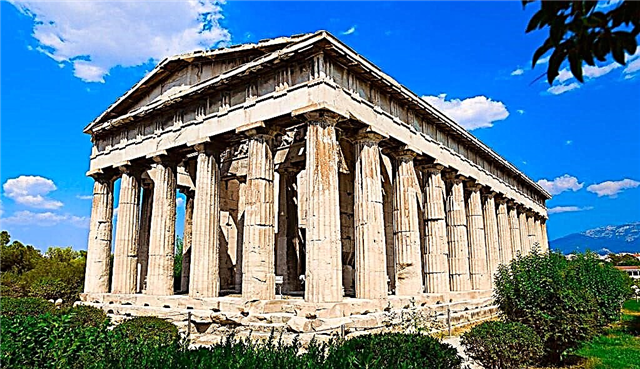
It would be unforgivable to ignore the Agora - a market square from ancient times with the Temple of Hephaestus, located in the historical center of the city on the western side of the Ancient Agora. The archaeological park is open to the public. The Temple of Hephaestus is the best preserved ancient building in Athens. Hephaisteion was erected in 230 BC, and it was dedicated to Hephaestus, the patron saint of artisans and blacksmiths, and Athena Ergani, the goddess of pottery.
Your eyes will see a beautiful building with marble columns, friezes of the main entrance, and even a well-preserved roof. Hephaisteion received parishioners at all times. The preservation of this building is explained precisely by the fact that with the arrival of Christianity in Greece, the temple was turned into the Church of St. George, and monks and clergymen saved it from plunder for many years and took care of its condition. After Greece received the status of a free state, the building of the temple was used as a museum, and later it itself became an open-air exhibit. The narrow streets of the historic center of Plaka are hidden among the houses. And only Hephaestillon rises above them.
Monastiraki square
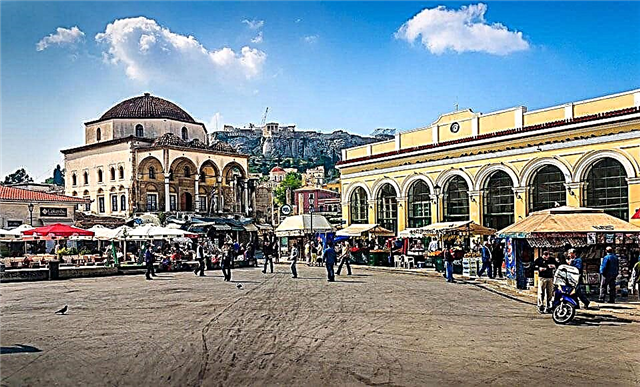
One of the most atmospheric places in Athens is Monastiraki Square, filled with people every day. Centuries ago, there were Athenian monasteries - the "Great Monastery", most of which was destroyed during the excavations of the 19th century. The area (later the entire district) was named after the remaining 17th century Monastiraki church. (small monastery) Outwardly modest building will impress you with luxurious interior decoration, magnificent frescoes. Another religious building - the Tsistarakis Mosque (18th century) admires the beauty and originality of its architecture. It was built under the Ottoman governor Tsistarakis in 1759.
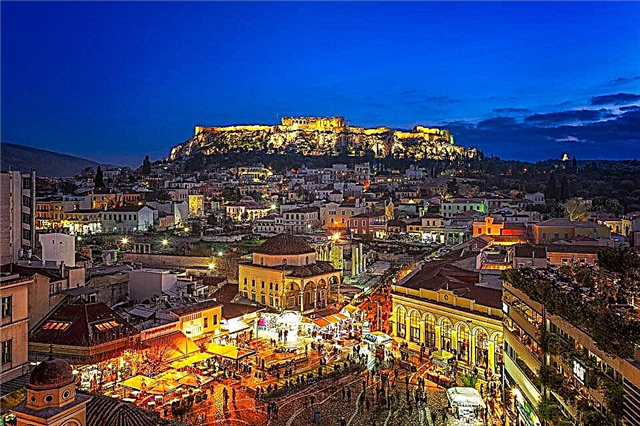
The history of its creation is reflected in the legend of an ancient curse: for the use of a stone from the Column of Zeus in the city for the use of a stone from the Column of Zeus, a plague epidemic began in the city. The governor was removed from power and poisoned. The minaret as a symbol of the Ottoman invaders was demolished in the 19th century, and the beautiful building was turned into the Museum of Ceramics (a branch of the Museum of Folk Art). If you find yourself in the square on a day when the Flea Market is open next door, walk along its rows and taste the special flavor. Everything that happens here can be precisely described with the catch phrase "Everything is there in Greece!"
Lekavitos

Mount Lekavitos will be the final chord of an eventful day trip to Athens.You can climb the 277 meters high hill either on foot, by taxi, or in the most impressive way - by funicular. From the height of Lekavitos, a fantastic panorama of the entire city opens. Since ancient times, noble townspeople have settled on this place, and to this day life on the lands of Lekavitos is considered expensive and privileged. In recent years, climbing the mountain has become an integral part of wedding ceremonies with a mandatory visit for newlyweds to the chapel of St. George, located on the top of the hill. It is here, at the end of the day, that you can take memorable panoramic shots and leave in your memory the feeling of flying over the city.
In Europe, it is difficult to find a city that even remotely resembles Athens. It is a city where tradition and history live side by side with modernity. There is where to go and what to see. The Greeks themselves will always be sincerely glad of your desire to touch the eternal.





